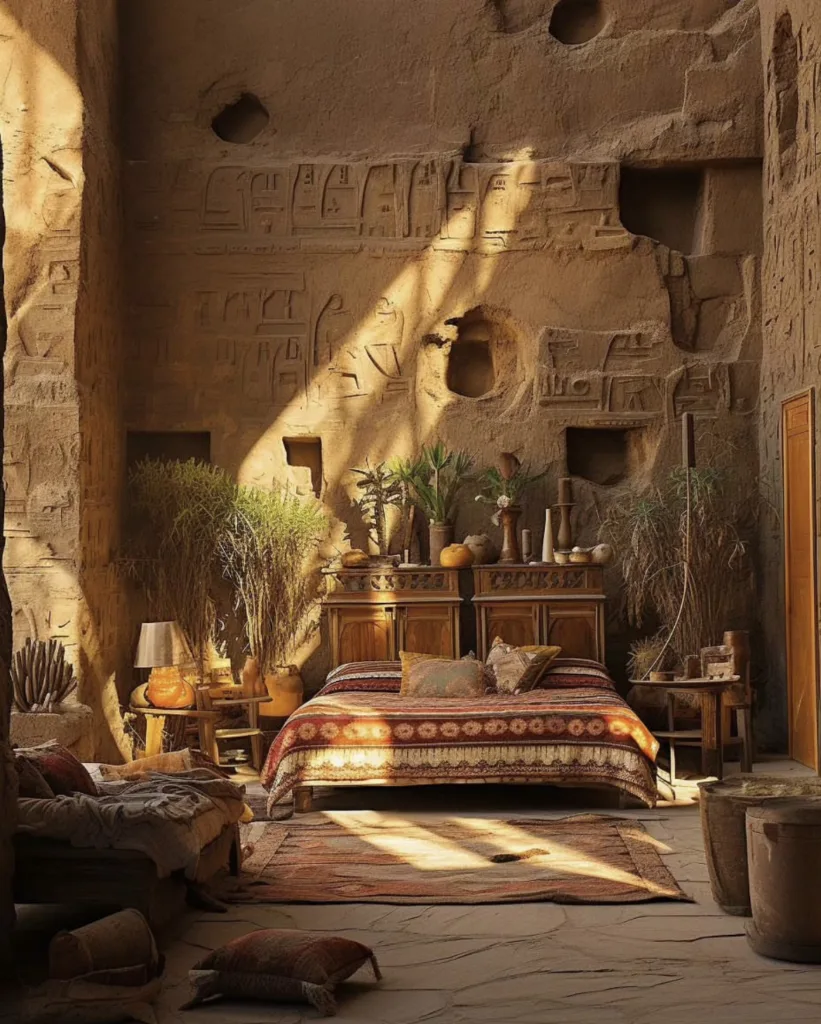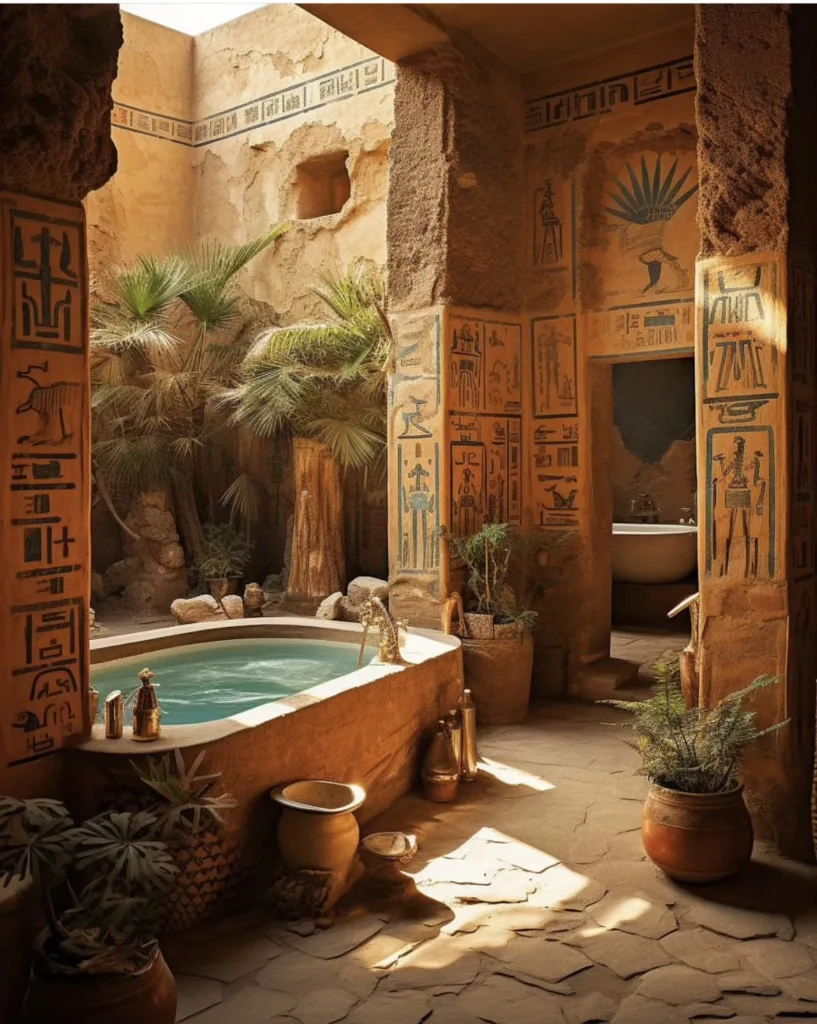“Writings on the Walls” is an ongoing series by Hassan Ragab, created using Midjourney, which explores history, identity, and immortality. The series seamlessly merges ancient history with our contemporary lives by incorporating hieroglyphics into modern homes.
In ancient Egypt, architecture served to transcend the concept of time. The stories of daily life were inscribed onto walls projecting the concept of immortality. Reflecting on this legacy raises questions like – What lessons can be learned from this legacy? How might it inspire us to reimagine the way we tell the stories of our own homes?

The ancient Egyptian temples still stand today as proof of one of the greatest civilizations in history. With its walls inscribed with texts and scenes, the temple details stories of ancient Egyptian life.
Hassan Ragab is an Egyptian-American graphic designer creating a fusion of the old and the new by using AI image generation tools to create a series of images that artfully blends the vibe of ancient Egyptian temples with modern interior design.

In a recent CNN Arabic interview, Ragab shared his journey with AI tools. His fascination lies in applying them to reshape and reflect the future of architecture in different ways. Although his work focuses on modern architecture, Ragab has always been interested in Egyptian architectural history. He highlighted that AI is an opportunity to approach architectural history from an artistic perspective.
Sharing his insights with CNN Arabic, Ragab explained, “It is like an attempt to rediscover the Egyptian heritage in a way that keeps pace with contemporary changes and the impact of international architectural trends on the Egyptian urban environment.” Further expanding on this, he stated, “This series is part of an artistic research journey in my attempt to find a visual design language based on a symbolic image of Pharaonic architecture.”

With an extensive background in architecture, archaeology, computational design, furniture design, construction, and generative arts, Ragab regards ancient Egyptian architecture as “one of the most important architectural human products, because of the artistic and philosophical meanings and ideas it carries.” He further states that it is inherently “a funerary architecture that revolves around the eternal afterlife that follows death.”
Ragab describes his AI creations as “a visual artistic product that embodies artistic or design perceptions,” and he believes they “lack the final details that characterize conventional engineering designs.” These Midjourney-generated designs quickly gained popularity on social media and many people mistook them for actual photographs of existing places while others suggested turning them into real hotel rooms.


